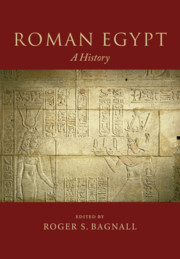Book contents
- Roman Egypt
- Roman Egypt
- Copyright page
- Contents
- Illustrations
- Maps
- Boxes
- Contributors
- Preface
- Chronology
- Maps
- 1 Laying the foundations for Roman Egypt
- 2 The coming of Roman rule
- 3 Development and crisis in a Roman province
- 4 The making of Late Antique Egypt
- 5 Divergence and division
- 6 The Persians, the Arab conquest, and another transformation of Egypt
- Epilogue
- Glossary
- Bibliography
- Index
2 - The coming of Roman rule
Published online by Cambridge University Press: 19 August 2021
- Roman Egypt
- Roman Egypt
- Copyright page
- Contents
- Illustrations
- Maps
- Boxes
- Contributors
- Preface
- Chronology
- Maps
- 1 Laying the foundations for Roman Egypt
- 2 The coming of Roman rule
- 3 Development and crisis in a Roman province
- 4 The making of Late Antique Egypt
- 5 Divergence and division
- 6 The Persians, the Arab conquest, and another transformation of Egypt
- Epilogue
- Glossary
- Bibliography
- Index
Summary
With the death of Antony and Cleopatra after the battle of Actium in 30 BC, the Roman general Octavian, soon to be called Augustus, took control of Egypt. Roman rule brought a standing garrison of some 20,000 troops and began the long process of making the administration of Egypt more like that used elsewhere in the Romans’ diverse empire. Although no longer a royal capital, Alexandria remained a center of commerce and culture. Much of Egypt’s wheat surplus was shipped to Rome to feed its population, and Egypt was partly integrated into regional economic networks. Roman taxation policies favored the concentration of wealth in private hands and the development of an urban elite that could take on many of the tasks of governance. The cult of the emperors was introduced into Egyptian temples, which continued as vital cultural centers during the first two centuries of Roman rule. The Jewish community of Egypt was destroyed during a revolt in the early second century.
- Type
- Chapter
- Information
- Roman EgyptA History, pp. 46 - 120Publisher: Cambridge University PressPrint publication year: 2021

